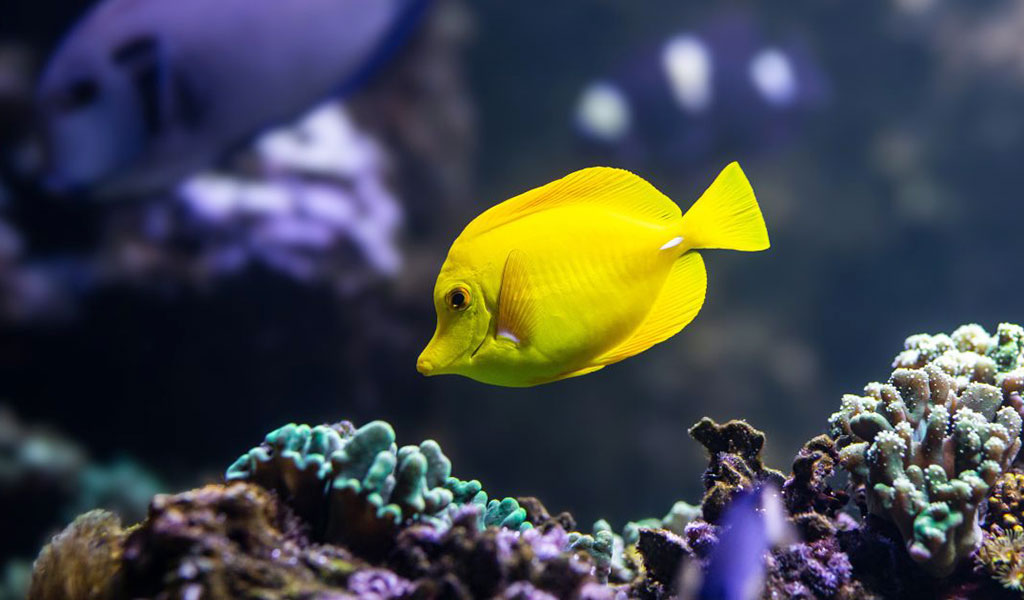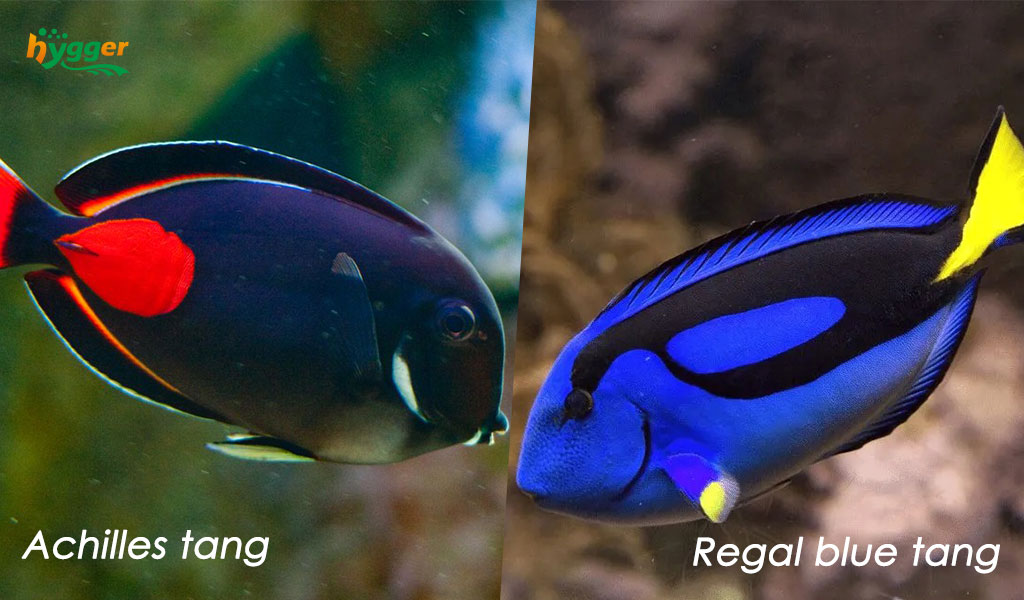Tang fish can be territorial and may display aggression. Also, keeping tang fish in aquariums can be challenging. They require attention to their specific needs and well-maintained aquariums. So, how to take care of Tangs? To keep tangs healthy in aquariums, let’s learn some tang fish care pointers.
What water salinity level do blue tangs require
Water parameter requirements
| Water temperature | 75-82℉ | Ammonia level | 0 ppm |
| pH level | 8.1-8.4 | Nitrite level | 0 ppm |
| Salinity level | 1.020-1.025 | Nitrate level | Below 20 ppm |
| Alkalinity level | 8-12 dKH | Calcium level | 380-450 ppm |
| Specific gravity | 1.020-1.025 | Magnesium level | 1350-1450 ppm |
Also, here is one tip for tang fish care. The water parameter requirements may slightly vary depending on the tang species. So, it is better to research the specific needs of your tang fish before introducing them.
Tank environment requirements
- Substrate
A sandy substrate can be an excellent option. It replicates the natural environment of tangs and provides a soft surface for them to forage and potentially sift through for food. Just choose fine-grained sand that is suitable for marine aquariums and ensure it is properly cleaned before adding it to the tank.
- Live rock
Tangs are happy to see live rock in their tank. Live rock provides hiding spots and grazing surfaces for algae. While it helps establish beneficial bacteria. Plus, it also aids in creating a natural-looking environment for the tangs to explore.
- Filtration & Circulation
Efficient filtration and water circulation are vital for tang tanks. A high-quality filtration system, including mechanical, chemical, and biological filtration, helps remove waste and maintain clean water. Additionally, power heads or wavemakers can be used to create gentle water movement, mimicking their natural reef habitat.

- Lighting
Tangs benefit from ideal lighting that supports the growth of beneficial algae. A lighting system that provides adequate intensity and a spectrum suitable for photosynthesis will promote the growth of algae and other beneficial organisms.
How many tang fish in a 120-gallon tank
The ideal tank size can vary depending on the species of Tang fish. Generally, considering their size, swimming behavior, and territorial nature, large tanks are better choices. Commonly, small tang fish need at least 75 gallons, while the minimum tank size of large tang species should be 125 gallons.
To take a 120-gallon tank as an example, you can keep a medium-sized tang or a pair of smaller tangs, depending on the species and size. Just make sure ample swimming space and hiding places.
Tang fish tank mates
When considering tank mates for tang fish, it’s important to choose species that are compatible both in terms of behavior and water parameters. Here are some suitable tank mates for tang fish.
Peaceful community fish
Tangs generally do well with peaceful community fish that are not overly aggressive or territorial. Examples of compatible community fish include clownfish, gobies, wrasses, anthias, cardinal fish, and certain species of damselfish.
Diverse reef inhabitants
Tangs are commonly found in reef environments, so they can coexist with a variety of reef-compatible species. This includes corals, anemones, shrimp, snails, and small peaceful invertebrates.
Large tank mates
Tangs can be relatively large and active swimmers, so it’s beneficial to choose tank mates that are of similar size or larger. This helps prevent the tang from being bullied or stressed. Some compatible large tank mates include larger angelfish, butterflyfish, triggerfish, and certain species of grouper.

Research specific tang species
Different tang species may have slightly different compatibility requirements. Some tangs, like the yellow tang (Zebrasoma flavescens), are generally more peaceful and can coexist with a wide range of tank mates. However, tangs like the powder blue tang (Acanthurus leucosternon) or the Achilles tang (Acanthurus achilles) may be more challenging due to their territorial nature and specific dietary needs.
Take Achilles tangs as an example, can they be excellent tank mates for Regal blue tangs? Exactly, yes. It is possible to keep the two tang species together. Both of them are beautiful and popular tang fish. Nonetheless, here are some tips for you. You should consider tank size and hiding places. Plus, it is crucial to introduce both Tangs to the tank simultaneously. You can introduce the Achilles tang first, as Regal blue tangs can be more aggressive toward newcomers. This allows the Achilles tang to establish its territory before introducing the Regal blue tang, reducing potential aggression.
Key takeaways
Some tangs are peaceful, while some are aggressive and territorial. Hence, you should be cautious when choosing tank mates. Given below are some pointers.
No matter which tank mates you choose, you’d better research and understand the specific care requirements, temperament, and compatibility of both the tang species and the potential tank mates. Moreover, make sure that the tank is appropriately sized to accommodate the needs of all the fish and provide enough swimming space and hiding spots. After introducing tank mates, you should closely monitor the behavior of both Tangs and newcomers. If excessive aggression or signs of stress are observed, it may be necessary to separate them.
Generally, aggressive or territorial fish should not be kept together in one tang fish tank. Aggressive fish can stress or harass tangs, leading to health issues. Examples of fish to avoid include aggressive damselfish, puffers, and certain species of wrasses known for their aggression.
